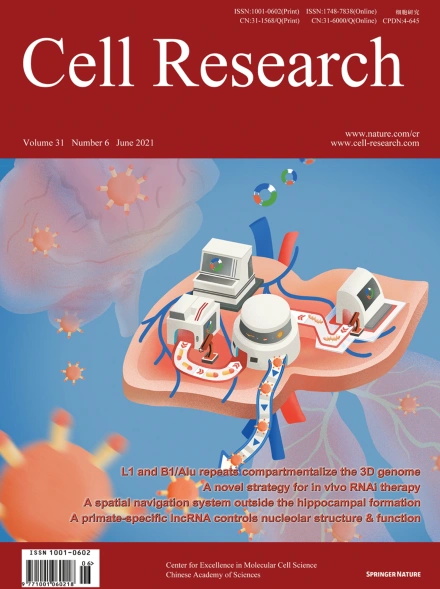
Advanced Search
Submit Manuscript
Advanced Search
Submit Manuscript
Volume 31, No 6, Jun 2021
ISSN: 1001-0602
EISSN: 1748-7838 2018
impact factor 17.848*
(Clarivate Analytics, 2019)
Volume 31 Issue 6, June 2021: 717-719 |
Structural basis for the different states of the spike protein of SARS-CoV-2 in complex with ACE2
Renhong Yan1,2,* , Yuanyuan Zhang1,2 , Yaning Li3 , Fangfei Ye1,2 , Yingying Guo1,2 , Lu Xia1,2 , Xinyue Zhong1,2 , Ximin Chi1,2 , Qiang Zhou1,2,*
1Center for Infectious Disease Research, Westlake Laboratory of Life Sciences and Biomedicine, Key Laboratory of Structural Biology of Zhejiang Province, School of Life Sciences, Westlake University, Hangzhou, Zhejiang 310024, ChinaDear Editor,
Severe acute respiratory syndrome coronavirus 2 (SARS-CoV-2) has become a severe threat to global health.1 The spike (S) protein on the surface of SARS-CoV-2 exploits angiotensin-converting enzyme 2 (ACE2) as cellular receptor and mediates the fusion of the viral and the host cell membrane during infection.1,2 The activation of the S protein requires the receptor-binding domain (RBD) binding to the peptidase domain (PD) of ACE2 and the cleavage by host proteases into the N-terminal S1 subunit and the C-terminal S2 subunit.2,3,4 An additional furin cleavage site “RRAR” present in the S1/S2 cleavage region of SARS-CoV-2, which is absent in SARS-CoV that shares about 80% sequence identity with SARS-CoV-2 and caused an epidemic in 2002–2003, might help accelerate the activation of the S protein. S1 consists of the N-terminal domain (NTD), the RBD, subdomain 1 and 2 (SD1 and SD2). The RBD adopts two distinct conformations: “up” and “down”. Only the “up” RBD exposes the receptor-binding site. S2, containing the hydrophobic fusion peptide, is responsible for the viral and cell membrane fusion. The molecular mechanism underlying the activation of the S protein of SARS-CoV-2 represents a critical clue for therapeutic development. Here we report the cryo-electron microscopy (cryo-EM) structures of trimeric extracellular domain of the S protein (hereinafter referred to as S) at multiple states and conformations, including the all RBD-locked, activated, S1/S2 trypsin-cleaved, PD of ACE2-bound, and the full-length ACE2-bound states. PD binds to the trimeric S protein with consistent interface, inducing conformational change at adjacent region. The trypsin-digested S protein tends to accommodate more PD molecules. Furthermore, the structure of the S–ACE2–B0AT1 ternary complex indicates that one ACE2 dimer binds two trimeric S proteins simultaneously. These results provide clues for the mechanism of the activation of the S protein of SARS-CoV-2.
https://doi.org/10.1038/s41422-021-00490-0